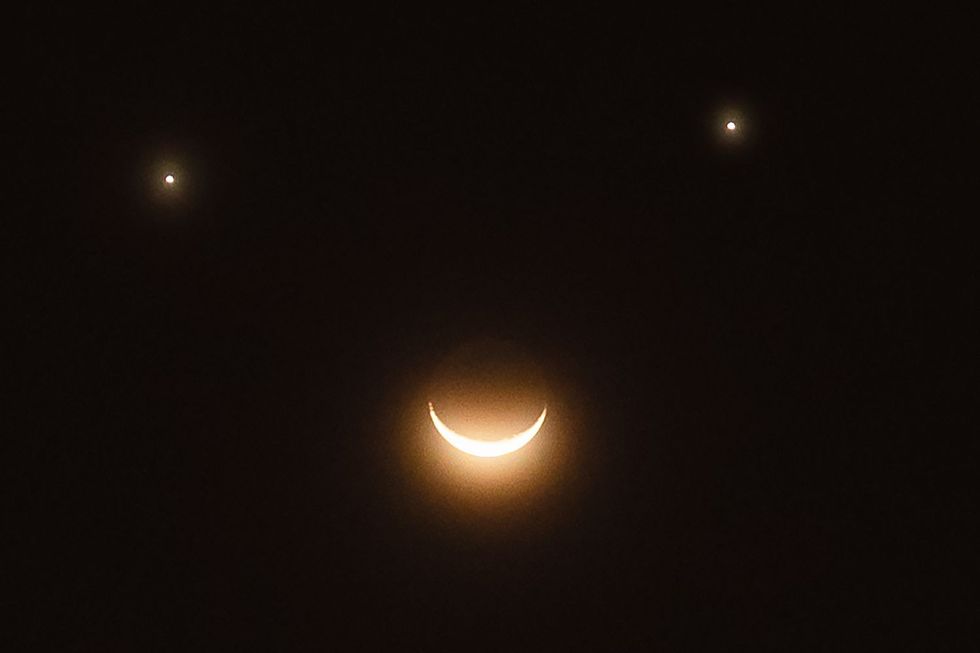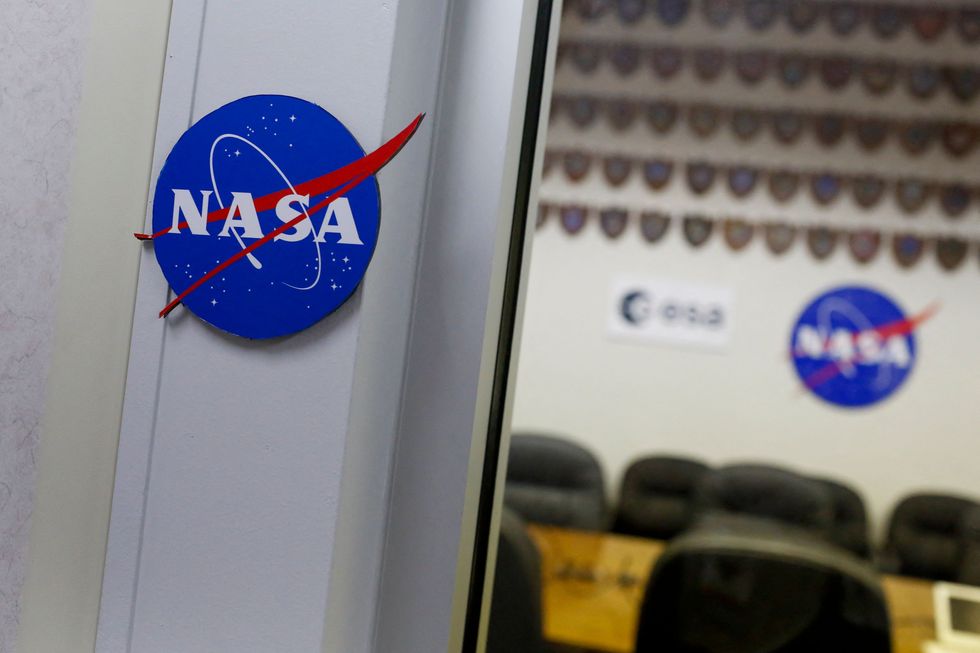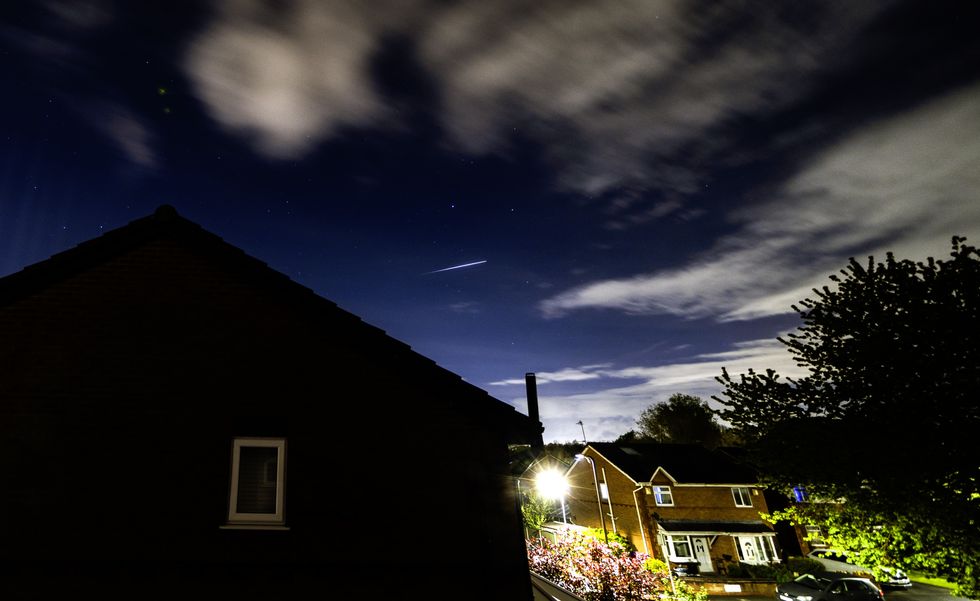WATCH: Nasa astronauts Suni Williams and Butchwilmore splashdown back on Earth after nine months stranded in space
GB NEWS
Amateur stargazers will have to be quick - the 'charming' formation may last only for about an hour
Don't Miss
Most Read
Latest
The Moon, Venus, and Saturn are expected to briefly align into a rare formation resembling a "smiley face" this week, Nasa has said.
Skygazers will be able to see the two planets and the crescent Moon align into a grin that could last about an hour in the early hours of Friday, the space agency said.
"Find Venus, Saturn, and the crescent moon gathered low in the east as dawn warms the morning sky," Nasa said in a statement earlier this month.
But amateur stargazers will have to be quick - the "charming" formation may last only for about an hour, at around 5.30am.

Skygazers will be able to see the two planets and the crescent Moon align into a grin
GETTY
"Those with a clear view to the horizon might also pick out Mercury looking bright, but very low in the sky," it said.
Venus is expected to be the higher of the two "eyes", while Saturn will be the lower, according to Nasa Solar System ambassador Brenda Culbertson.
"Anyone wanting to try for a glimpse of the conjunction should find a clear eastern horizon from which to observe," the astronomer told a local US TV station.
Since the formation will appear very low in the sky, it might be blocked from view and not visible everywhere, astronomers say.
But with the right viewing conditions, sky watchers anywhere in the world can see the spectacle as opposed to regional sky events like total solar eclipses, they say.
LATEST SPACE NEWS:
 It is currently 44 million kilometres from Earth, travelling at a velocity of 13.5 kilometres per second, according to Nasa's Eyes on Asteroid
It is currently 44 million kilometres from Earth, travelling at a velocity of 13.5 kilometres per second, according to Nasa's Eyes on AsteroidGETTY
This week is also expected to bring shooting stars as Earth passes through streams of comet dust behind one of the planet's annual meteor showers.
The Lyrids meteor shower is one of the oldest recorded in history, observed and reported as early as 687 BC.
Its streaks come from the debris left behind by the long-period comet Thatcher which swings by the Sun every 415 years.
It is expected to peak on the morning of Tuesday through Wednesday, with 15 meteors per hour appearing under dark skies.
CELESTIAL PHENOMENA - AS SEEN FROM EARTH:
- Rare space phenomenon to be visible for the last time this week until 2040
- Incredibly rare full planetary alignment to dazzle night sky for last time until 2040 - ‘You will be able to see most of the planets!’
- Quadrantid meteor shower to blaze through Britain's skies TONIGHT as moon's position will increase visibility

PICTURED: A Lyrid Meteor is seen in the sky above Lee Park in Liverpool
PA
"As day turns to night, you'll realise it should be a good night to see the peak of the Lyrid meteor shower between now and sunrise," the US national weather service said on social media.
While the renowned meteor shower can be best spotted over the northern hemisphere, they may also be seen from south of the equator, astronomers say.
"View them after about 10.30pm local time until dawn, with the best viewing around 5am," Nasa said in a blog post.
"For the best experience, face roughly toward the east, lie down in a safe, dark place away from bright lights, and look straight overhead," the space agency said.













